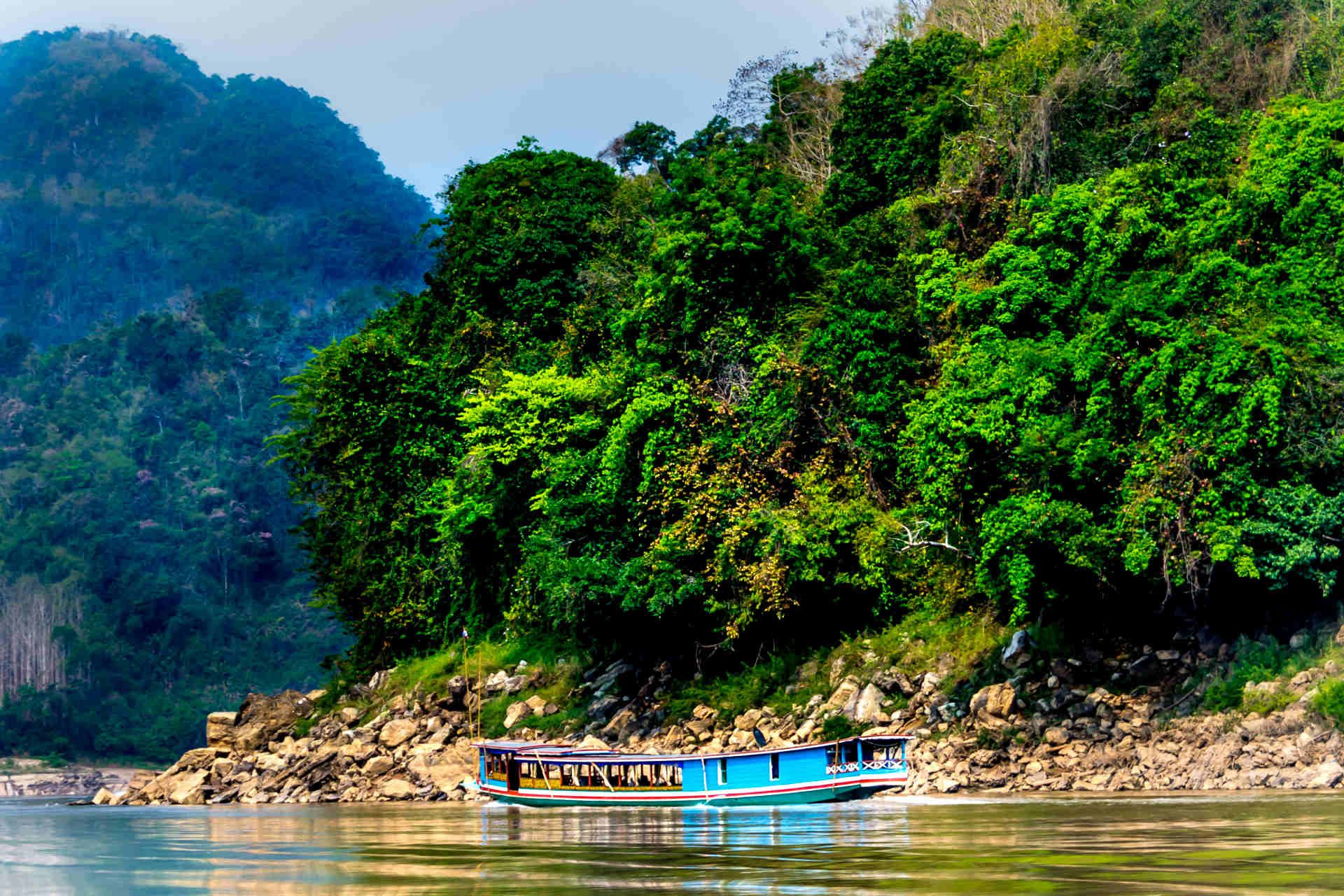5. Wat Xieng Thong
Spared wars, fires and overzealous restorations, the jewel of temple-rich Luang Prabang is as elegant as it is historic. Close to the tip of the peninsula, on the banks of the Mekong is Luang Prabang’s most renowned temple, Wat Xieng Thong. This temple, with its low sweeping roofsepitomising is built in the classic Luang Prabang style.
Inside the sim, the eight thick supporting pillars, richly stencilled in gold, guide the eye to the serene golden Buddha images at the rear, and upwards to the roof, which is covered in dhamma wheels. On the outside of the sim, at the back, is an elaborate mosaic of the Tree of Life set against a deep red background. Throughout, the combination of splendid gold and deep red gives this temple a captivatingly regal atmosphere.
















